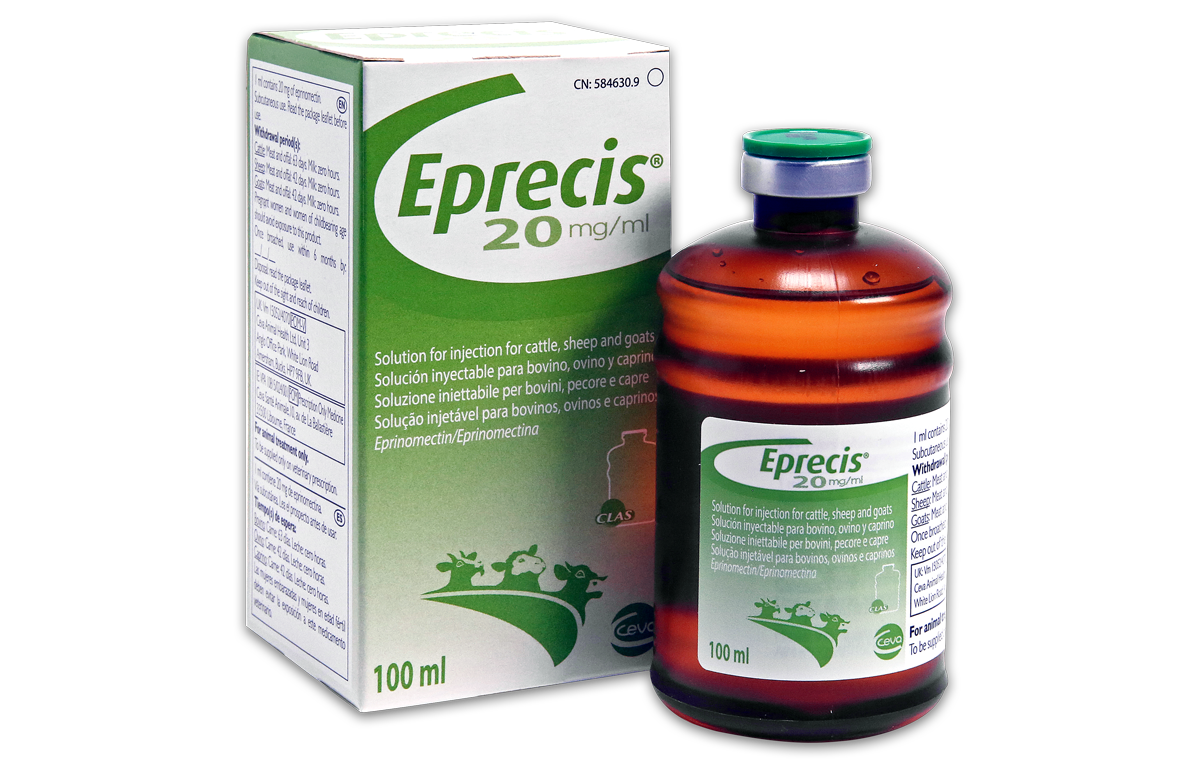Scientific article
Pharmacokinetic profiles of eprinomectin after a single subcutaneous or intramuscular injection in non lactating ewes
Authors
V. Krömker U. Falkenberg N. Wente Y. Zhang F. Preine J. Nitz A. Tellen S. Leimbach S. Trotebas J. Muñoz-Bielsa P. Gisbert
Publication information
World Buiatric Congress 2024
Objectives
Eprinomectin is highly important to the dairy sheep industry as it can address internal and external parasitic infections with limited distribution in milk (zero-day milk withdrawal period). Recently, an injectable formulation has been licensed for subcutaneous administration in sheep (“Eprecis® 20 mg/mL Solution for Injection, Ceva Santé Animale”). Whenever possible, the injectable formulation should be preferred to the pour-on to limit the risk of under-exposure and environmental toxicity (Rostang et al., 2022). Although subcutaneous route is the preferred way for many users, certain circumstances make intramuscular route more appealing. To gain more insights about the safety and e ficacy of the intramuscular route, a comparative pharmacokinetic study was performed in non-lactating ewes.
Materials and methods
Following a two-week acclimatation period, 24 non-lactating dairy ewes in good health were weighed one day prior treatment and randomized accordingly to be alocated into 2-treatment paralel groups (subcutaneous or intramuscular). At day 0, al animals received 0.2mg/kg of ”Eprecis® 20 mg/ml” according to their group. Local reactions were assessed once daily for 1 week then every 2 days until disappearance of signs (corresponding to 2 consecutive observations with no signs). The folowing criteria were used (0 to 3 scoring): pain at injection, sweling, erythema, induration. Blood samples were colected at the folowing time points: D-1, 6 h, 8 h, 10 h, 12 h, 24 h, 36 h, 48 h, 60 h, 72 h, 96 h, and on D7, D14, D21, D28 and D35 after treatment. Plasma specimen analyses for eprinomectin were performed according to a specific LC-MS/MS method with a lower limit of quantification of 0.50 ng/mL. The pharmacokinetic analysis was performed using Phoenix® WinNonlin® 8.3 software (Certara, USA).
Results
Regarding the local tolerance, some signs were observed in 8 out of 24 animals: 5 animals after subcutaneous injection and 3 animals after the intramuscular injection. These signs were mostly sweling at the injection site during the first 3 days post-dosing. Folowing intramuscular administration of eprinomectin, the median time above 2 ng/mL was 7 days and the mean Cmax was increased by 144% compared to the subcutaneous way route of administration. The AUC0-7d and AUC0-t were also increased by +71% and +26% after dosing intramuscularly compared to subcutaneously. The same inter-individual variability was reported for the pharmacokinetic parameters whatever the route of administration.
Conclusions
“Eprecis® 20 mg/ml” was well tolerated, whatever the route of administration. The pharmacokinetic profile of eprinomectin was diferent after intramuscular administration compared to the subcutaneous route as the rate and extent of absorption were increased by 144% for Cmax and by 71% for AUC0-7d. Taken together these results suggest that intramuscular route at the currently registered dose has a good local tolerance and a good predicted e ficacy in sheep. General tolerance and tissue residues should be further evaluated.
Publication file:





